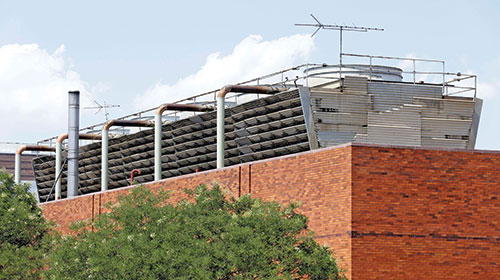But while most of the emphasis has been on cleaning to eliminate the microbes that enter human lungs and sicken anywhere from 8,000 to 18,000 people every year, attention may shift to the way the water droplets that carry the microbes are dispersed and inhaled by victims.
Cooling system drift eliminators, usually in the form of baffles that block or capture droplets, could be crucially important. Design of evaporative cooling towers has become more preventive, says Pearson. “If the bacteria is captive in the cooling tower, it is not dangerous to humans.”
High-efficiency drift eliminators allow no more than 0.005% of the recirculating rate of a cooling tower to escape.
Although there have been accounts of the droplets traveling a mile or more, they would tend to evaporate, effectively killing the microbes. Much depends on the climate, the droplet size and other factors.
In the words of New York City Mayor Bill de Blasio (D), the droplets carrying the microbes in New York City “emanated” from five building cooling systems in the Bronx. From there another 13 buildings were mapped as places where the microbes were found. Among the sources was the Opera House Hotel and Lincoln Hospital.
Complicating matters is the fact that in January, eight people became ill with Legionnaires’ disease in another area of the Bronx. None of them died. In the most recent outbreak, one victim who survived worked 20 miles away, across the Hudson.
Brian Nemetz, technical director for industrial hygiene at Partner Engineering & Science, says Legionella are “pretty easy to find.” He is concerned that cleaning with chlorine has recently not used enough of the chemical to kill microbes.
A report just released by the Centers for Disease Control and Prevention shows that showers, faucets and other sources of potable water contribute to many waterborne disease outbreaks. The report revises the picture of Legionnaires’ disease as something exclusively contracted from a cooling tower’s airborne droplets, although cooling towers have the potential to affect larger numbers of people.




Post a comment to this article
Report Abusive Comment